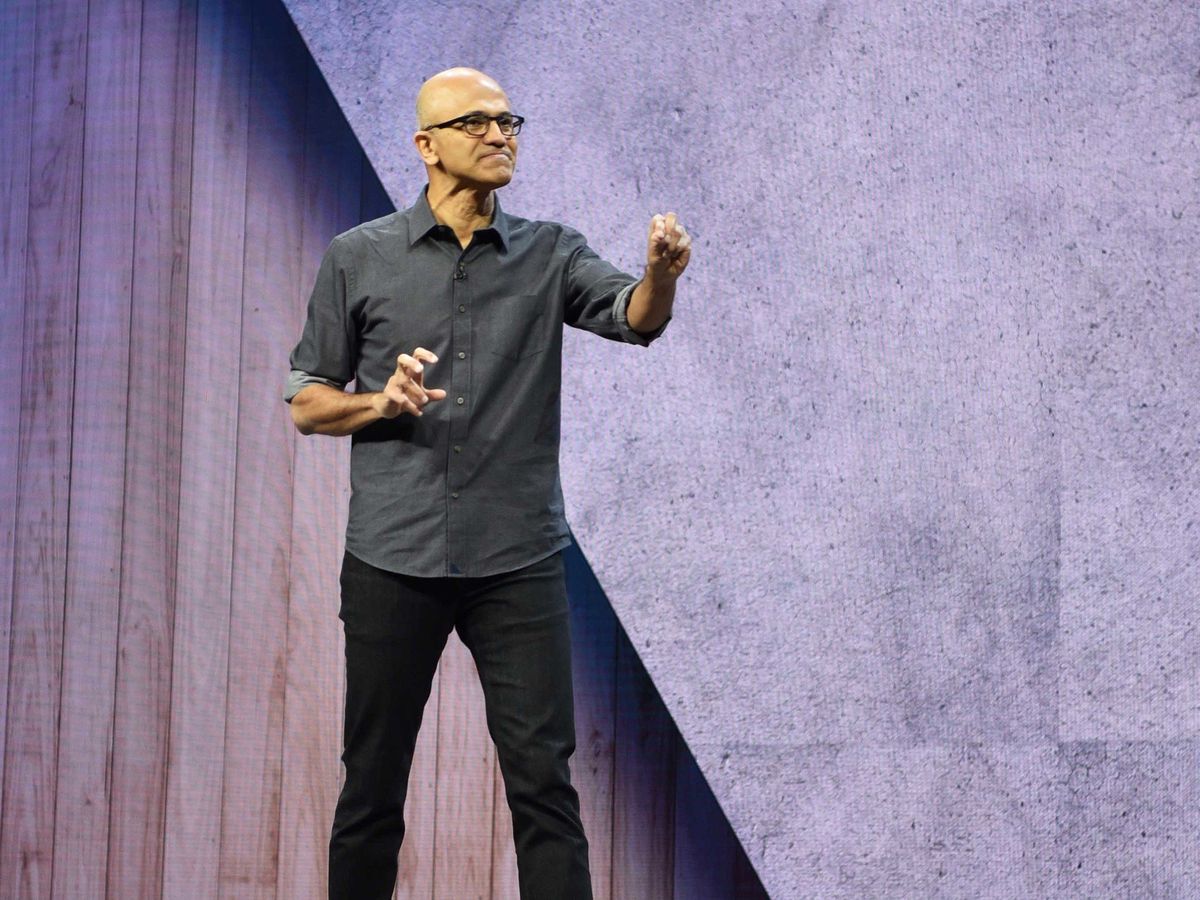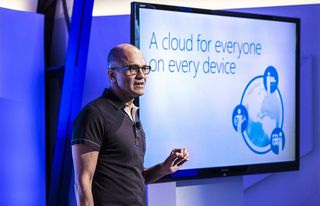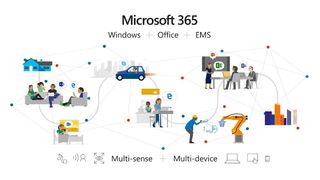Microsoft's riskiest (and most exciting) investments in the future
Microsoft's investments in ambitious, forward-looking technologies are risky bets on the future, and they may pay off or leave the company scrambling for relevance.

Lack of vision and commitment have been blamed for Microsoft missing tech revolutions, like smartphones and smart speakers. Abandoning Groove Music, its Zune MP3 player, and changing course on its digital assistant Cortana may be symptomatic of the same.
Microsoft's current direction suggests that it has learned, to some extent, from these mistakes. Though it hasn't returned to markets it lost (or is losing), its current investments reveal a forward-looking perspective that sees future computing shaped by technologies that are currently in their infancy.
Via a comprehensive platform approach, Microsoft is building the foundation, infrastructure, and tools for a personal computing reality that it believes will not revolve around a single device. This computing "system," Microsoft believes, will run on the cloud, be shaped by ubiquitous computing, be comprised of the Internet of Things (IoT), enable users via 5G-powered edge computing, and support platform-agnostic Progressive Web Apps (PWA), among other things. All or none of this may work in Microsoft's favor but whatever the outcome, this is how Microsoft sees "tomorrow."
These are some of Microsoft investments that represent the most risk, but also in some cases, the most potential.
Azure the world's computer

Microsoft CEO Satya Nadella said Azure, Microsoft's cloud platform, would be the world's computer. From the robust tasks that keep Fortune 500 companies running, to the cloud-based functions consumers rely upon as they use their PCs and smartphones, and the gaming worlds that enthrall gamers and maintains their achievements, Microsoft is positioning Azure as the all-encompassing intelligent cloud.
Ubiquitous computing
Microsoft supports its cloud-computing goals with a strategy to be "everywhere computing is happening." As computing continues evolving beyond "PCs," Microsoft is integrating Windows with iOS and Android via tools like Microsoft Graph, Project Rome, Cortana and Your Phone. It's also inundating these platforms with Microsoft apps. By making development tools like .NET, GitHub and more a part of a cross-platform development strategy, Microsoft integrates its tools into the very fabric of cross-platform computing experiences. Additionally, a collaboration between Microsoft and Amazon brought Cortana to the Amazon Echo in Microsoft's bid for the ambient computing space.
IoT

Microsoft's investments in the billions of IoT devices expected to be connected in the coming years are part of its cloud and ubiquitous computing goals. These devices include factory machinery, intelligent cameras, connected cars, wearable tech, smartphones, PCs,and much more. The theory is IoT will exist all around us supported by an intelligent cloud potentially enabling multi-sense IoT devices to "perceive" and respond to human activity (ambient computing) via Cognitive Services. IoT will, from Microsoft's perspective, be the all-encompassing portal to Azure.
Get the Windows Central Newsletter
All the latest news, reviews, and guides for Windows and Xbox diehards.
Edge computing and 5G
Edge computing, via initiatives like Microsoft Azure Sphere, is represented by the cloud-connected devices that are closest to the user. This can be an industrial drone or a mobile device. Edge computing allows complex tasks that normally occur in the cloud, due to processing power needs, to be moved to edge devices. 5G is expected to increase processing capacities on current and future edge devices like Microsoft's rumored Surface Andromeda pocket PC.
ACPCs and PWAs

Microsoft partnered with Google in a desperate attempt to mainstream PWAs to usurp the current app model. PWAs promise of "the best of the web and benefits of apps" is potentially an ideal fit for an always-connected cloud computing world. Windows-powered Always-Connected PCs (ACPCs), like the HP Envy x2, and a potential future Surface Andromeda device have much to gain from Microsoft's PWA investments.
Augmented and virtual reality
Microsoft's HoloLens 2, an untethered wearable Windows 10 augmented reality (AR) computer, is expected to be lighter, harbor on-device AI, and have a wider field of view than version one. Microsoft's long-term vision is a wearable with lenses that transition from clear for AR to opaque for VR. Windows Insider chief Dona Sarkar and HoloLens creator Alex Kipman believe these smartglasses will eventually replace smartphones.
Cloud gaming
Gaming across Windows and Xbox is paramount to Microsoft. And Microsoft and AMD are expanding gaming to a hybrid cloud-device experience. Of AMD's part, CEO Lisa Su said:
We're making decisions now [regarding semiconductors] that you won't see the outcome for 3, 4, 5 years ... we're trying to predict the future and hopefully we make some good decisions.
Quantum computing
Microsoft is slowly building a quantum computing platform that others can use to solve many of the world's problems. Traditional computers use sequences of bits, 0s or 1s, to process data. Quantum computers use qubits which can be both a 0 and a 1, in a phenomenon called superposition, to do the same. Thus, quantum computers can quickly process data traditional computers would require years to process. However, Microsoft is years away from reaching its goal.
Wrapping up ...
Microsoft may not be building a smartphone, investing in a consumer-focused digital assistant, or pushing advanced HoloLens AR tech to consumers, but the company is investing in the future. Only time will tell if those bets will pay off. But whether you agree or disagree with its direction, Microsoft is trying hard not to miss whatever comes next.
Jason L Ward is a columnist at Windows Central. He provides unique big picture analysis of the complex world of Microsoft. Jason takes the small clues and gives you an insightful big picture perspective through storytelling that you won't find *anywhere* else. Seriously, this dude thinks outside the box. Follow him on Twitter at @JLTechWord. He's doing the "write" thing!
